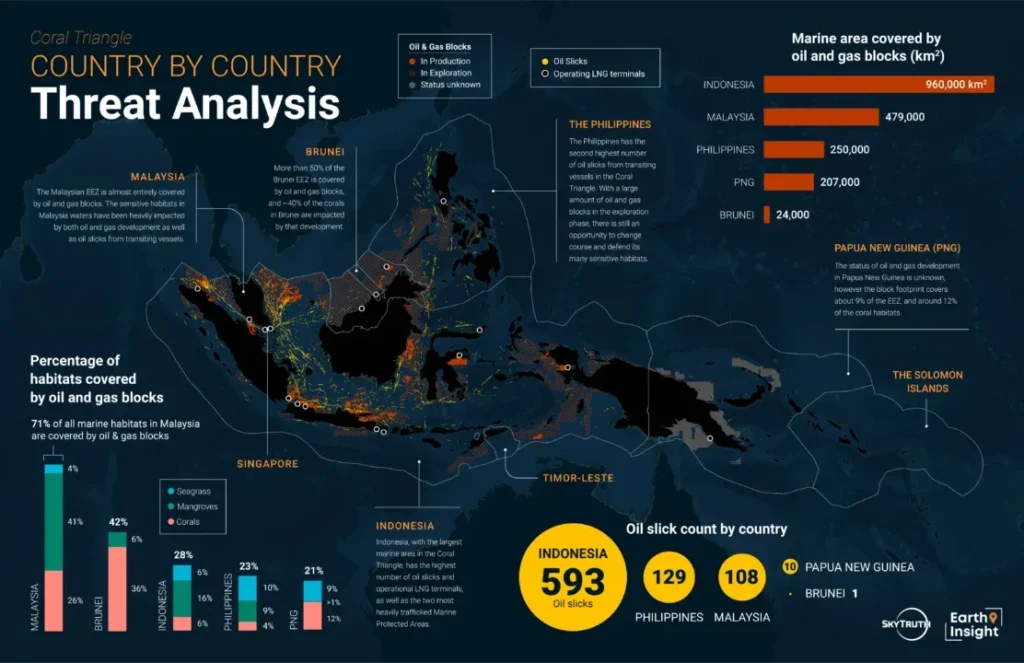
 Known as the ‘Amazon of the seas’, the Coral Triangle is one of the most biodiverse marine regions in the world and the threat from oil and gas expansion is immense. The Coral Triangle contains more than 600 Marine Protected Areas (MPAs). About 16% of theprotected area overlaps with oil and gas blocks – a large majority of which are still in the exploration phase. A new analysis Coral Triangle at Risk: Fossil Fuel Threats and Impacts from Earth Insight, SkyTruth, CEED Philippines, and others, released at the Sixteenth Conference of the parties to the Convention on Biological Diversity (CBD COP16) found that 24% of coral reefs, 22% of seagrass areas, and 37% of mangroves overlap with current or planned oil and gas blocks. The report warns that fossil fuel expansion will increase tanker traffic and the risk of oil spills, with dire consequences for local populations and marine life.
Known as the ‘Amazon of the seas’, the Coral Triangle is one of the most biodiverse marine regions in the world and the threat from oil and gas expansion is immense. The Coral Triangle contains more than 600 Marine Protected Areas (MPAs). About 16% of theprotected area overlaps with oil and gas blocks – a large majority of which are still in the exploration phase. A new analysis Coral Triangle at Risk: Fossil Fuel Threats and Impacts from Earth Insight, SkyTruth, CEED Philippines, and others, released at the Sixteenth Conference of the parties to the Convention on Biological Diversity (CBD COP16) found that 24% of coral reefs, 22% of seagrass areas, and 37% of mangroves overlap with current or planned oil and gas blocks. The report warns that fossil fuel expansion will increase tanker traffic and the risk of oil spills, with dire consequences for local populations and marine life.

Additional key findings from this study include:
- There are more than 100 known offshore oil and gas blocks that are currently producing in the region covering over 120,000 square kilometres of marine area – about 1% of the Coral Triangle.
- 24% of coral reefs, 22% of seagrass areas, and 37% of mangroves overlap with current or planned oil and gas blocks.
- 11% of Key Biodiversity Areas (KBA) and Important Marine Mammal Areas (IMMA) in the Coral Triangle is overlapped by oil and gas blocks.
- There are over 450 known blocks that are being explored for future oil and gas extraction covering an additional 1.6 million square kilometers, an area larger than Indonesia.
- Since 2020, 793 oil slicks have been visible in the Coral Triangle in satellite imagery – 98% were created by transiting vessels, which release untreated, oily wastewater in a process called bilge dumping, the other 2% can be attributed to oil infrastructure.
- There are 80 MPAs in the Coral Triangle that are completely covered by oil & gas blocks – 55 of which are found in Malaysian waters. Additionally, 35 oil slicks appeared within MPA boundaries.
- Cumulatively, all slicks covered an area over 24,000 square kilometres – nearly enough oil to cover the land in the Solomon Islands.
Source: Press Release


